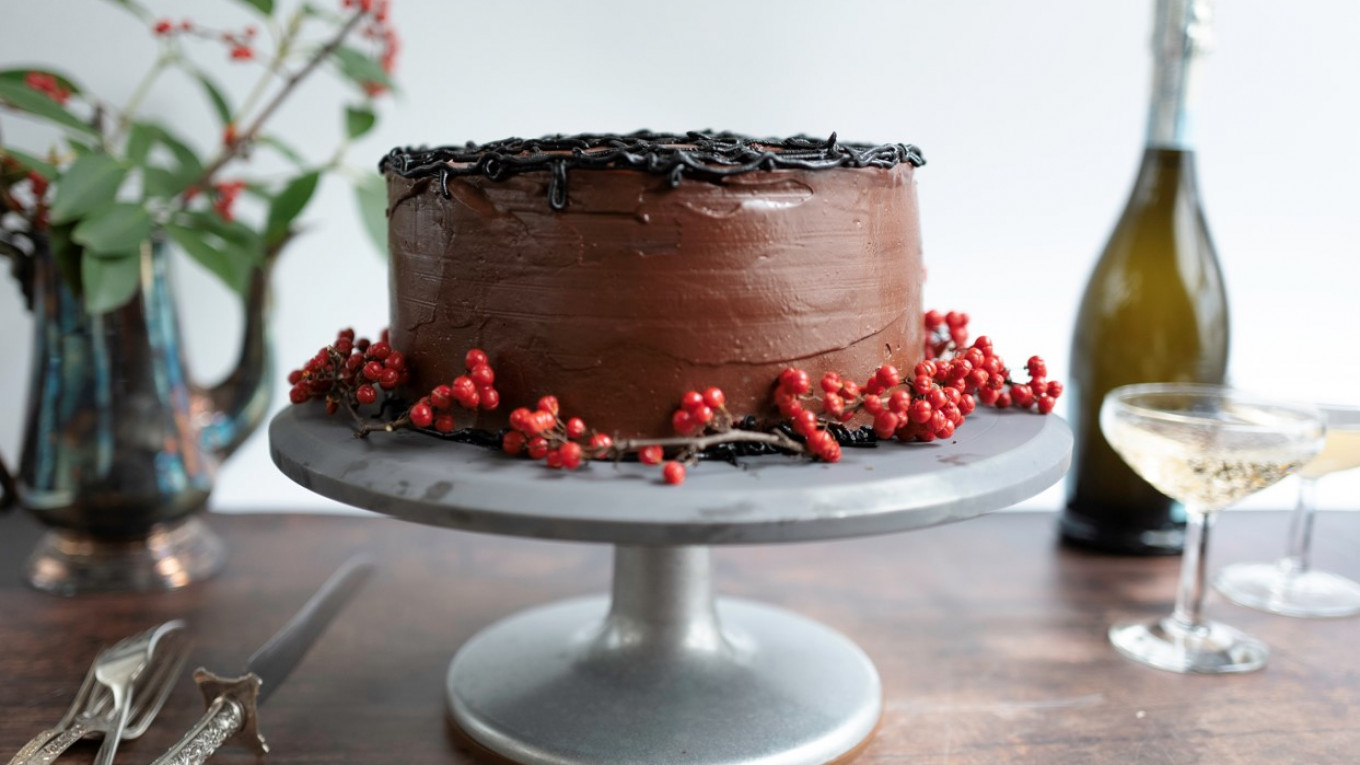Happy New Year!
2021 is now firmly behind us and I do hope that this column finds you filled with all kinds of optimistic thoughts, hopes, and resolutions for 2022! New Year’s Eve is my least favorite holiday of the calendar year, but New Year’s Day ranks in my top three favorite red-letter days! I love that feeling of a clean slate, a new diary, four quarters, twelve months, and 52 weeks, all blissfully empty of pesky things like dentist appointments, tax days, or car inspections.
I have the usual grandiose plans of achieving world domination in 2022, and that includes some very ambitious culinary goals. So I’m feeling very smug about being able to cross one of those goals off my list today as I debut my version of the incomparable Prague Torte. I probably use the word “iconic” a bit too much in this column, but it is certainly apt when describing one of Russia’s most beloved and storied cakes. Despite its name, this “iconic” cake was developed in by the renowned pastry chef Vladimir Guralnik, also the inventor of the almost equally revered “Bird’s Milk Cake” (also on my 2022 culinary goal list) and the “Zdenka” cake. Guralik was the generalissimo of the confectionary department of the Prague Restaurant where the cake – and Guralnik himself—became legend.
The Prague Restaurant is currently closed but its elegant neoclassical building still presides over one end of Old Arbat Street, in a location that has a rich history of landmark eateries: in the 1870s, the site boasted a popular tavern patronized by Moscow’s cab drivers. It was officially called “Prague,” but more affectionately known as “The Enemy,” by the cabbies, who may have overindulged on the strength of a night’s fares.
The leap from humble tavern to elegant restaurant happened around the turn of the century with the construction of a new building on the site built in the popular style moderne, but later adapted to neoclassicism. This boasted outdoor eating in season and an expansive menu of lavish pre-revolutionary favorites. After the Revolution, like so many elegant restaurants, the Prague was turned into a workers’ canteen, but in 1955, to celebrate the 10th anniversary of the liberation of Prague, the restaurant was reimagined once again as one of the city’s premier dining venues. The sale of the building in 2019 suggests that a new version of the Prague may be coming sometime in the future!
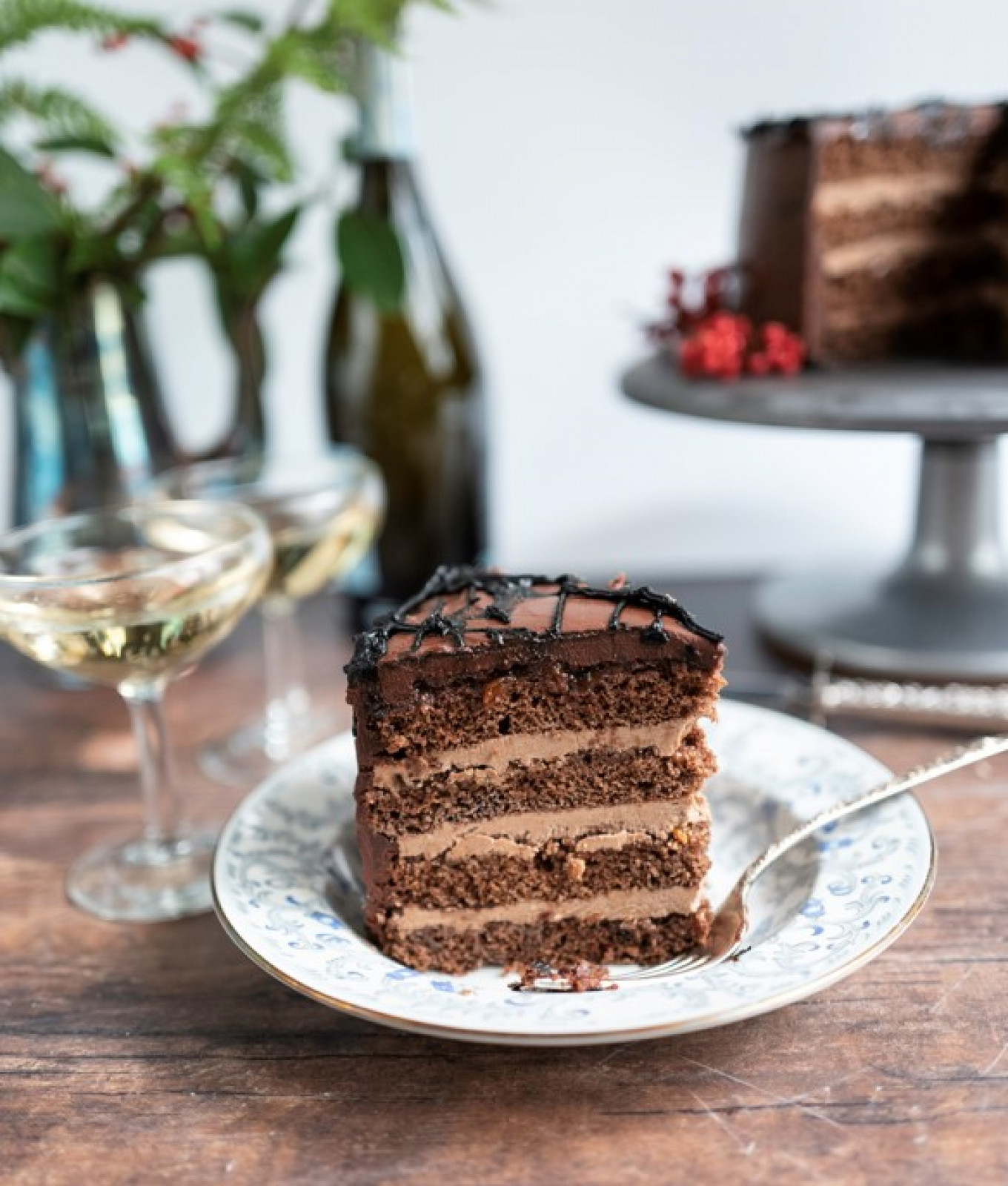
The Prague Restaurant during the Soviet era was synonymous with expansive dining and luxurious banquets. The menu was originally based on Czech national dishes, which were introduced to the Soviet Union by visiting chefs. You won’t find cake in the Czech Republic called Prague Torte, but the inspiration for Guralnik’s Prague Torte’s is clearly the tradition of luxurious confections such as Sacher Torte perfected in fin de siècle Austria-Hungary. Given the limitation of ingredients in the Soviet Union, Guralnik had to tone things down a bit for his version of a sponge cake soaked in liqueur, filled with creme Anglaise, and frosted with a chocolate glaze. Guralnik substituted Armenian cognac for Chartreuse and leaned heavily on that essential Soviet ingredient: gushenka or sweetened condensed milk, to make his creamy “Anglaise” filling.
Throughout the years, chefs have occasionally tried to update or improve the recipe for Prague Torte standardized by GOST, but Russians cling stubbornly to their memories of a cake so delicious that it was worth spending a good portion of a month’s salary and hours standing in line outside the Prague Restaurant to secure one for a festive occasion. So I have resisted the temptation to fiddle too much with GOST’s recipe, confining myself to making the sponge moister and ramping up the chocolate in both the Anglaise filling and the ganache frosting.
I know what you are thinking: a Prague Torte looks far too complicated to even think about, let alone tackle. But what better way to ring in the new year than by stepping out of your culinary comfort zone? Each of the four steps of this recipe is fairly straightforward with nothing fiddly or scary like whipping egg whites. Be sure to give the cake a long chill so that it can stand up to the final application of warm ganache.
A Prague Torte continues to be a symbol for celebration and makes a wonderful birthday cake or centerpiece for any festive occasion. What a lovely way to welcome 2022!
Happy New Year to all!
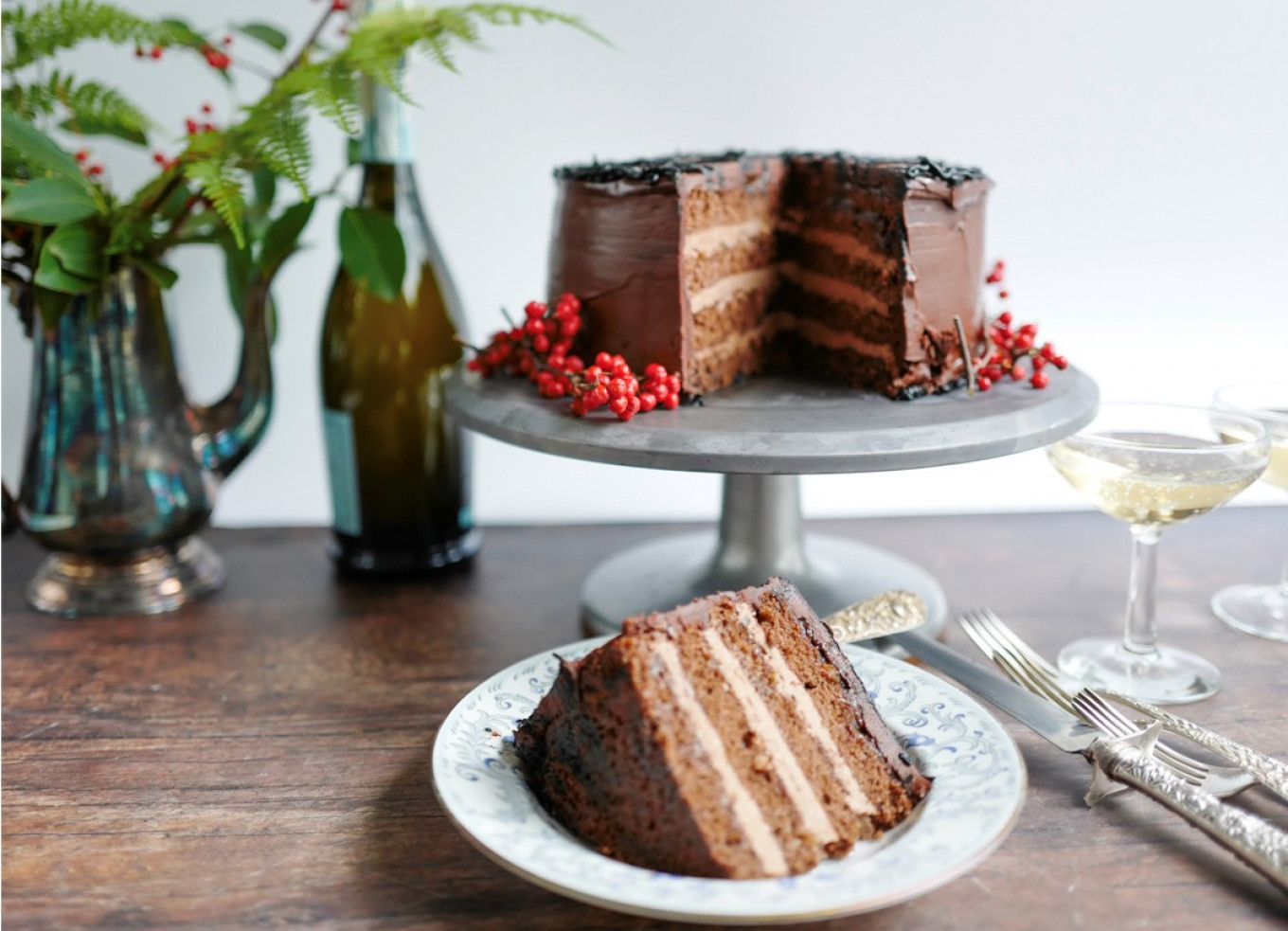
Prague Torte
Ingredients
For the sponge cake
- 6 eggs at room temperature
- ¾-cup (150 grams) sugar
- 1-⅓ cups (171 grams) all-purpose flour
- 1 tsp baking powder
- ⅓-cup (50 grams) cocoa powder
- 1 tsp vanilla extract
- 1 tsp chocolate extract
- 1 stick of butter (½-cup or 113 grams) melted and cooled
For the creme Anglaise
- 2 egg yolks
- 1-½ oz (40 grams) water
- 1 cup (220 grams) sweetened condensed milk
- 1-¾ cups (400 grams) unsalted butter softened at room temperature
- 2 Tablespoons (20 grams) cocoa powder
- 1 tsp vanilla extract
For the apricot glaze
- 2 cups (475 ml) apricot preserves
- ⅓-cup (80 ml) dark rum
For the chocolate ganache
- 7 oz (200 grams) bittersweet chocolate* 60%-70% cocoa cut into small pieces
- 7 oz (200 grams) heavy cream
*Do not use chocolate chips or morsels designed for cookies or brownies. These are coated with a substance that helps them keep their shape and will prevent the cream and chocolate from emulsifying.
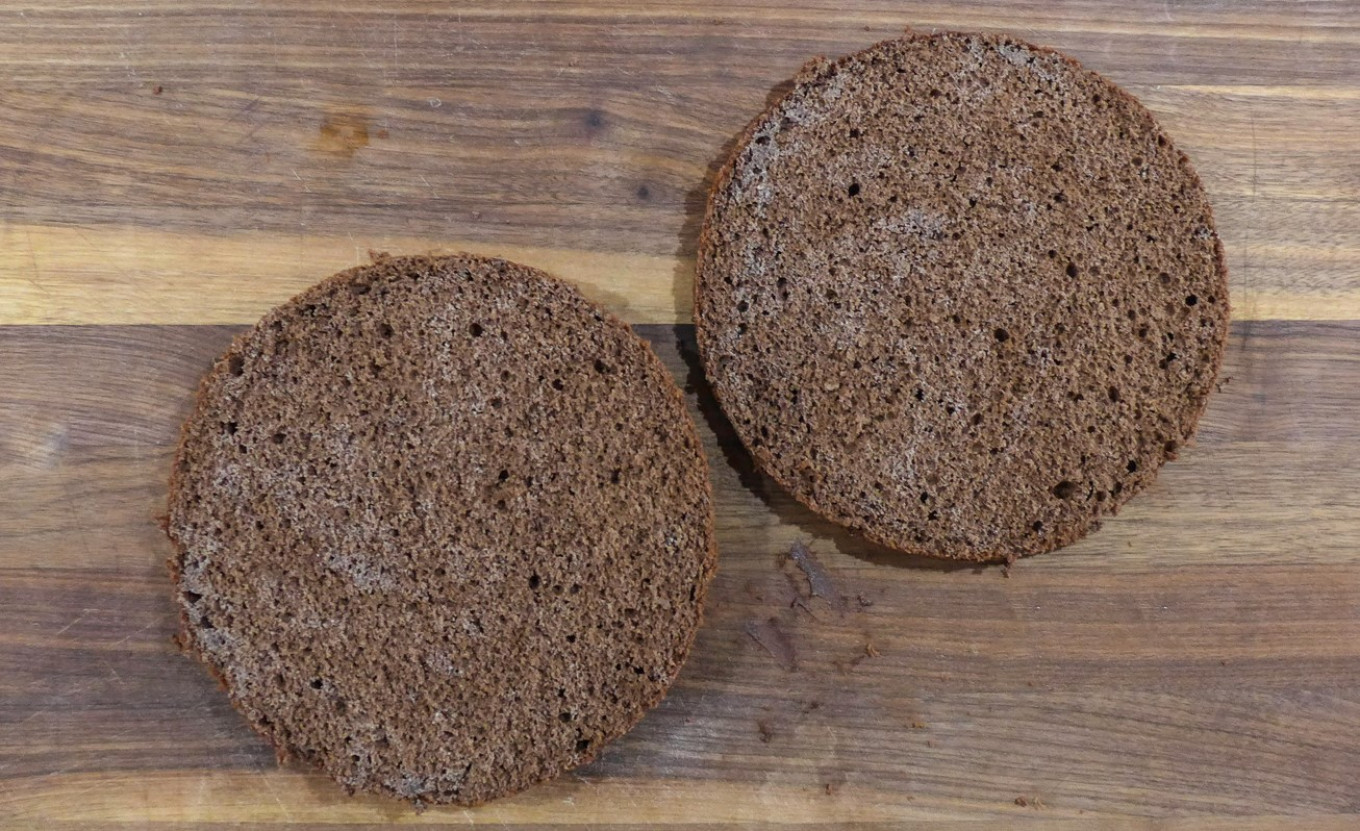
Preparation
Note: The cake needs to chill thoroughly before and after the ganache coating is applied, so plan accordingly. I like to let the cake chill overnight before the final glaze.
Make the sponge cake
- Preheat the oven to 350ºF (180ºC) and line two 8-inch (20-cm) cake tins with parchment paper. Do not flour or butter the sides — this will help keep the top level.
- Sift the flour, cocoa, and baking powder into a large mixing bowl and set aside.
- Combine the eggs and sugar in the bowl of a stand mixer fitted with a whisk attachment. Beat the mixture for 8-9 minutes on high speed until it grows noticeably paler, thickens, and takes on a very fluffy texture. Fold in the vanilla and chocolate extracts.
- Fold the dry ingredients into the wet gently until the mixture is completely combined. Add the melted and cooled butter and fold in.
- Divide the batter into two equal parts (use a scale if you want to be completely exact) and swivel each cake pan to level the batter. Bake for 18-20 minutes in the preheated oven until a toothpick tests clean or the middle of the cake springs back when you press it gently.
- Cool the cakes on a rack for 10 minutes, then run a knife or offset spatula around the edge and gently remove the cakes from the tins. Cool completely before proceeding to the next step.
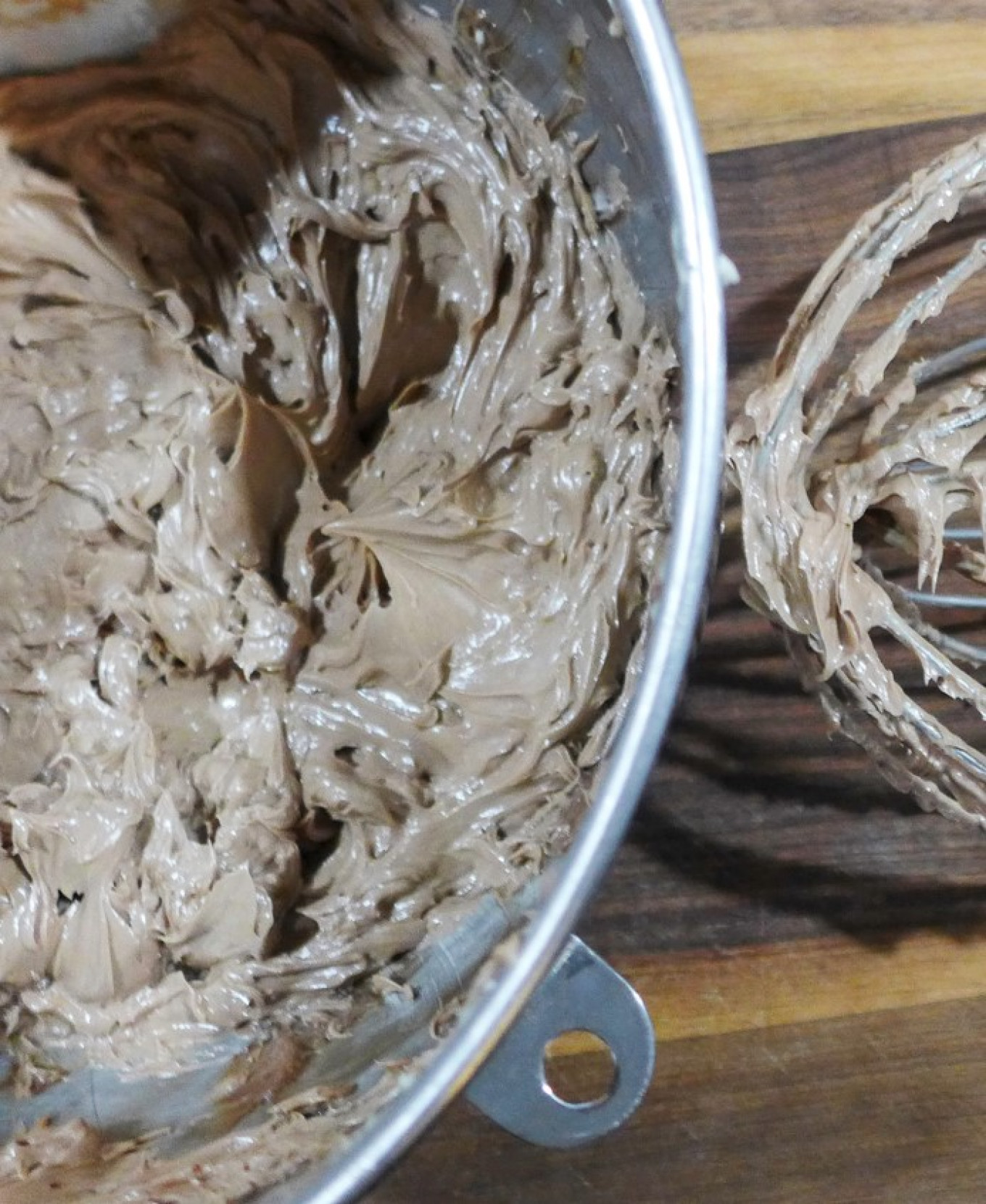
Make the “creme Anglaise frosting
- In a saucepan or in the top of a double boiler, whisk together the egg yolks and water, then add the sweetened condensed milk and stir together. Cook over low heat, stirring frequently until the mixture thickens and coats a wooden spoon. Remove from heat and let the mixture cool to room temperature.
- Place the softened butter in the bowl of a stand mixer fitted with a whisk attachment and whip on medium high speed for 3-5 minutes until the butter has become paler and fluffier. Reduce speed to medium, then add the cooled, condensed milk mixture in small increments (2-3 tablespoons at a time) to the butter until it is fully incorporated. Add the cocoa and vanilla extract and whip until completely combined. Chill until you are ready to use.
Make the apricot glaze
- Combine the apricot preserves with the rum in a small saucepan and simmer over low heat until it becomes a syrup.
- If desired, sieve the mixture to get rid of any chunks of fruit — I like my syrup chunky, but this is very much up to you.
Assemble the cake
- Cut each sponge cake in half for a total of four layers. Brush each cut side of the cakes with the apricot glaze. Divide the frosting into three equal parts, setting one-third aside.
- Place the first cake, cut side up on a cake stand lined with parchment paper. Frost each layer with the creme Anglaise frosting, then place the next layer, cut side up on top. Use the reserved frosting to create a “crumb coat” around the sides of the cake and the top, filling in any gaps between the layers. Use a bench scraper or offset spatula to create a smooth surface on which to pour the ganache. Chill the cake for at least 4 hours.
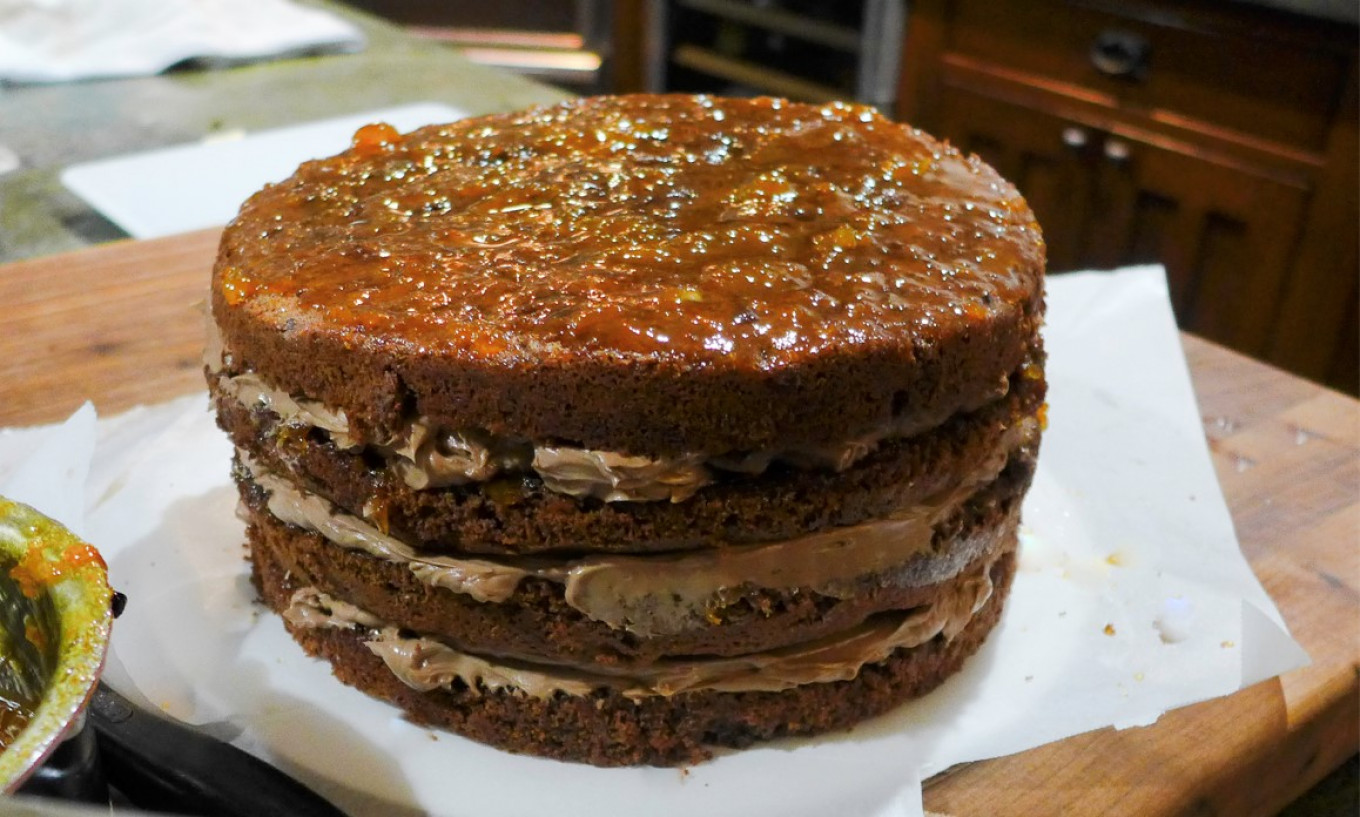
Make the ganache
- Chop the chocolate into very small pieces and place them in a large, heat-resistant bowl. Heat the cream over medium low heat until it is just coming to a simmer. Watch this carefully, as scorched cream will ruin the taste of the ganache.
- Pour the cream over the chocolate and let it sit for 1-2 minutes. Then stir the mixture slowly but steadily with a rubber spatula. At first it will look grainy as if it has curdled but keep stirring until it comes together into a silky-smooth substance. If there are any lumps, reheat the mixture in 20-second increments in the microwave and whisk it back to a smooth consistency. Cover the mixture with plastic wrap pressed up against the surface of the ganache and let it cool for 3-5 minutes, but no more or it will thicken.
- Set the chilled and frosted cake on a rack set over a baking sheet or roasting pan to catch the ganache. Pour the ganache over the cake, using an offset spatula to encourage the ganache to pour over the sides of the cake. Clean things up with a bench scraper. To decorate the cake, scoop the remaining ganache into a frosting bag and pipe it onto the cake. If making ahead of time, chill the cake, but get it out 30-40 minutes before so that the ganache can soften.
Recipe adapted (only slightly) from GOST.
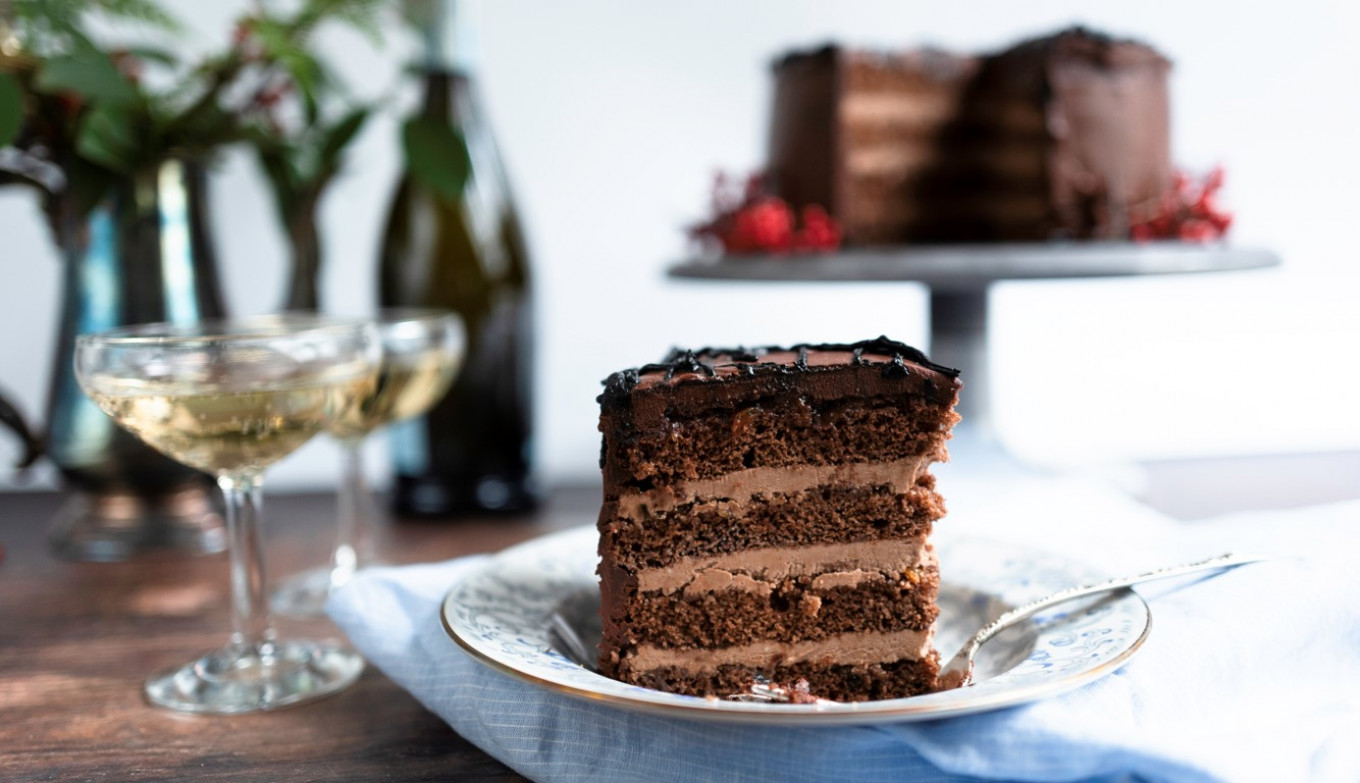
A Message from The Moscow Times:
Dear readers,
We are facing unprecedented challenges. Russia's Prosecutor General's Office has designated The Moscow Times as an "undesirable" organization, criminalizing our work and putting our staff at risk of prosecution. This follows our earlier unjust labeling as a "foreign agent."
These actions are direct attempts to silence independent journalism in Russia. The authorities claim our work "discredits the decisions of the Russian leadership." We see things differently: we strive to provide accurate, unbiased reporting on Russia.
We, the journalists of The Moscow Times, refuse to be silenced. But to continue our work, we need your help.
Your support, no matter how small, makes a world of difference. If you can, please support us monthly starting from just $2. It's quick to set up, and every contribution makes a significant impact.
By supporting The Moscow Times, you're defending open, independent journalism in the face of repression. Thank you for standing with us.
Remind me later.



